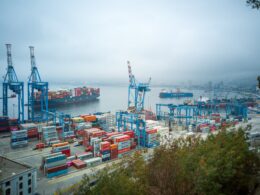Corey Tollefson, Infor
Is brick-and-mortar dead? With a record 7,000 store closings and 662 bankruptcy filings last year, and 3,800 closings (and counting) so far in 2018, the fate of retail continues to look uncertain. Take a look at Amazon to see how ecommerce has changed the retail landscape as we know it, leaving no industry undisrupted. With just a click of a mouse, customers can purchase whatever they want, whenever they want it — and have it shipped directly to their door.
While ecommerce offers unprecedented convenience, this is not the end of the road for brick-and-mortar. Customers still value in-store experiences. In fact, two out of three consumers think apparel brands should focus more on improving experiences both in-store and online, as opposed to focusing solely on their online presence.
Improved in-store services and experiences will keep brick-and-mortar stores afloat, but only if retailers look to new and innovative ways to re-engage with customers. Take, for example, Sephora. The beauty retailer is using AI to personalize the in-store shopping experience with its Color IQ technology. This tool uses machine learning to scan consumers’ skin and provide them with personalized skincare and makeup recommendations based on their needs. Sephora’s brick-and-mortar locations have produced more than 14 million Color IQ matches since its launch in 2012. This not only adds a touch of personalization to the user experience, but it also frees up time for employees to focus on other touchpoints within the customer journey. Employees can now place more emphasis on showing consumers how to use their Color IQ recommended products and promoting complimenting goods.
By taking notice of this industry shift, retailers large and small can use emerging technologies to enhance individual in-store experiences, increase inventory specialization, and — most importantly — benefit their supply chain and bottom line. Here’s how:
Give everyone a personal shopper.
People enjoy seamless, tailored shopping experiences online and demand nothing less in-store. According to Cotton Inc., 54 percent of consumers want to buy clothes from brands that recommend items based on previous purchases. Online, retailers can do this with cookies, but brick-and-mortar stores can achieve the same results by using information readily available in a customer’s transaction history.
AI lifts insights from customer transaction data, arming retailers with information to tailor in-store offerings on a customer-by-customer basis. For instance, analyzing customer receipts reveals which items shoppers buy most and which items are usually purchased together. Data on returns shows the items that are not performing well, and loyalty card data reveals how frequently customers are making purchases. With this information, retailers can provide customers with special offers, tailored specifically to their wants and needs, prompting more trips back to the store. Further, by storing these insights on the cloud, employees can access customer information to provide unique, in-person recommendations. This is extremely valuable for small retailers, given they may be limited to only a few brick-and-mortar locations. In this case, every touch point and customer interaction matters.
Stock only what is needed — and wanted.
Why stock a store with items that won’t sell? Last year, H&M (an Infor customer) left $4.3 billion in unsold inventory on the racks — prompting a dire need for technology help. Using AI algorithms, it can identify the kinds of items that will perform well with customers in particular neighborhoods and which won’t. This empowers retailers to make smart, data-driven inventory decisions tailored to individual store locations.
Take boutique clothing store Francesca’s many New York City locations. While these stores are all in the same city, each neighborhood has its own individual style. If Francesca’s used AI to analyze transaction data, it could tell if customers in SoHo preferred bolder styles and colors compared to shoppers in Midtown, who may gravitate toward more subdued, business wear. Taking these preferences into consideration, the store could strategically stock items that would perform best in each location — avoiding inventory waste and unnecessary markdowns. This is especially beneficial for small retailers who need to manage margins while boosting revenue.
By stocking fewer, better performing items, retailers will also require less brick-and-mortar space. This creates further savings in rent and operational expenses. By thinking smart and compact, retailers can be more agile about exploring new markets and capitalize on the opportunity to place stores in ideal, high-traffic locations.
Reap benefits in the supply chain.
In today’s highly competitive retail environment, the supply chain is one of the easiest places to cut costs. Stocking stores with data-driven insights allows retailers to manufacture only what they reallyneed and ship those items directly to the best location. Effective use of storage space is especially important for smaller stores with limited room. With a more accurate picture of which items sell well in certain areas, retailers will avoid shipping costs on low-performing items and conserve on inevitable returns. This supply chain optimization saves retailers money and reduces waste when manufacturing and distributing products.
Additionally, if retailers know that jeans, for instance, sell better in Texas and t-shirts sell better in New York, they can manufacture these items at locations closer to those stores. This helps merchandise arrive at its destination faster, for a lower price tag. While these changes happen behind the scenes, they can make a big impact on the bottom line, allowing small businesses to focus on adding value to the customer.
By investing in new technology to enhance in-store experiences, retailers can succeed at a time when every decision is make-or-break for many in the industry. As retailers are putting to the test, tools like AI, big data and cloud technology empower retailers with the insight needed to make smart decisions and increase in-store traffic.
Customers are now in the driver’s seat, and retail is becoming an industry that increasingly values specialization. Physical retail stores hold immense value for customers, but only if they can provide tailored experiences that customers demand. Brick-and-mortar is not dead, but companies large and small must learn how to best use technology to outsmart today’s biggest disruptors.













